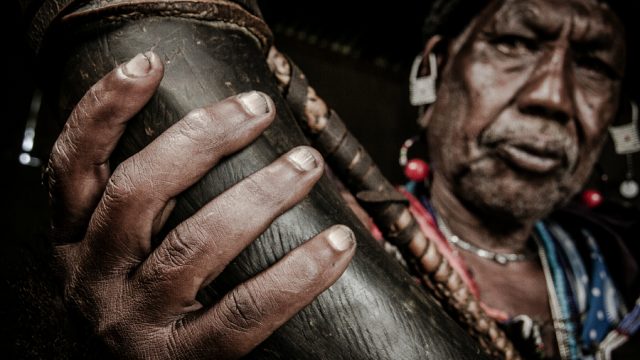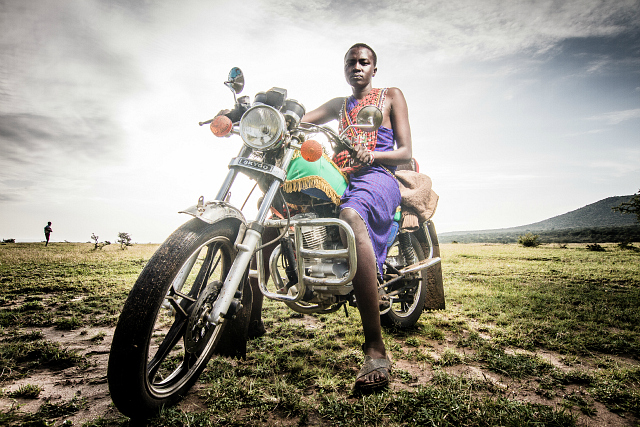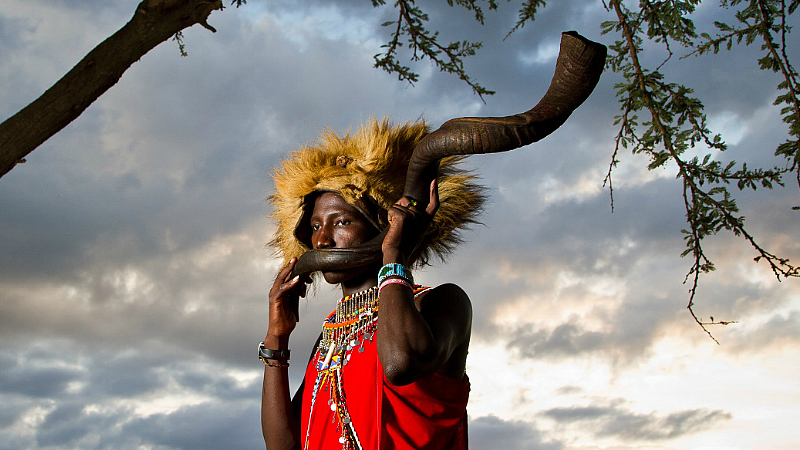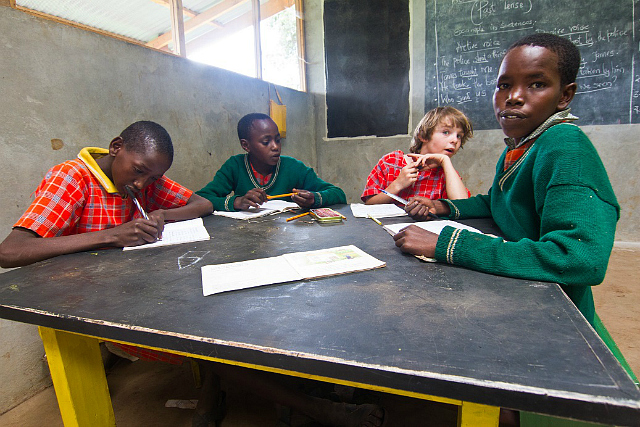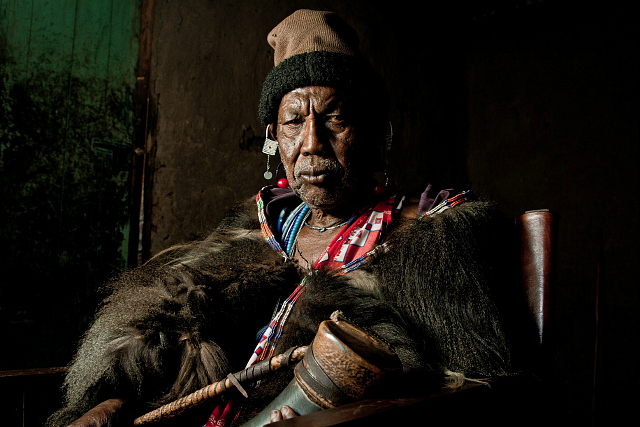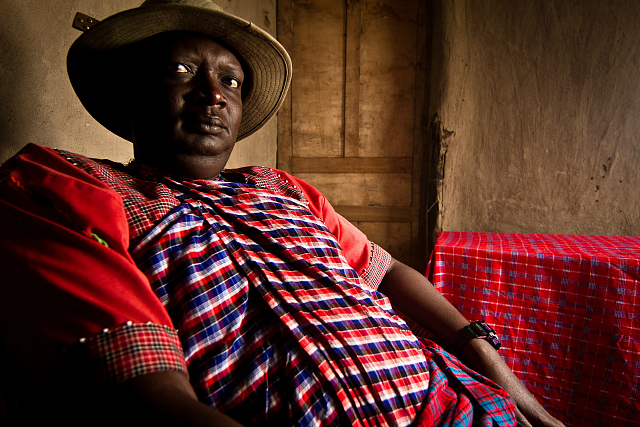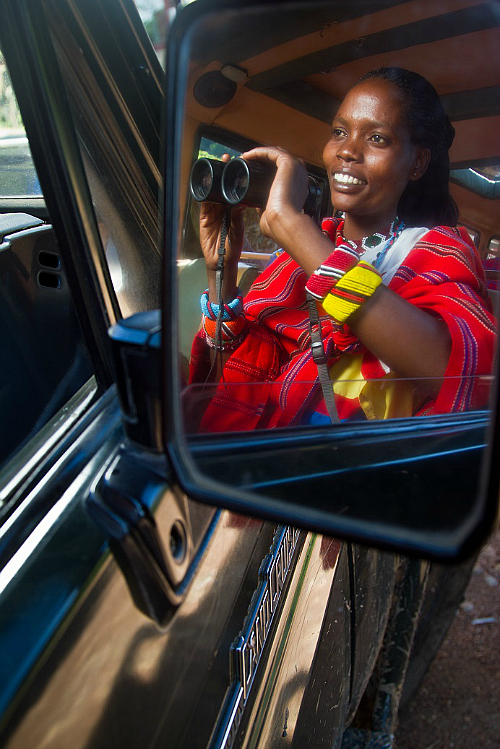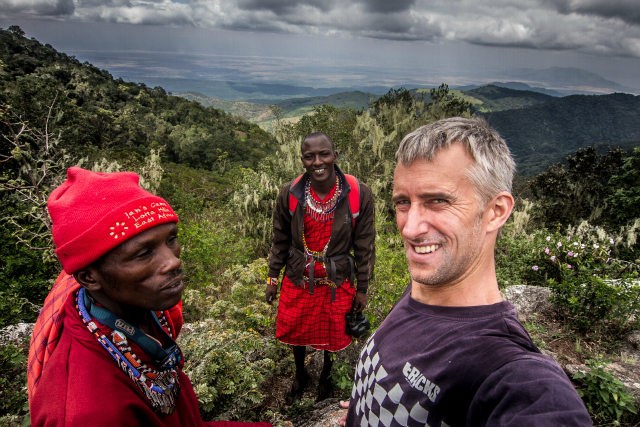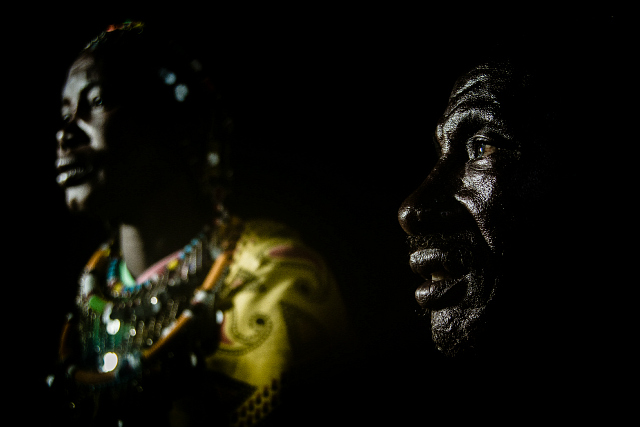Stuart Butler, a writer and photographer who has covered Africa for more than two decades, recently decided to walk across Maasai lands in Kenya in order to gain a more in-depth understanding of the impact of the 21st century lifestyle, conservation, political pressures and tourism on contemporary Maasai people. (To learn more about his journey, visit Stuart’s blog, Walking With The Maasai.)
He started walking with a Maasai companion on May 25, 2015 and finished at the end of June. In addition to a series of articles he wrote for AFKTravel, Stuart took hundreds of stunning photos of the people he encountered during his journey. Here is a collection of just some of these sublime portraits, which depict the remarkable stories and faces of the Maasai (and some of their non-Maasai compatriots).
This is John Tubula cruising around on his motorbike. The Maasai have long been famed for their ability to walk vast distances at speed and without stopping, but as one elderly Maasai lady I passed by said to me “Ah this is very good that you’re walking. The Maasai today can only walk as far as their motorbikes!”
This is Raketa. He is a dorobo rather than a pure Maasai. The dorobo are considered by the Maasai to be inferior due to the fact that traditionally they didn’t keep cattle and were instead hunters. Raketa found some fame when he appeared on the BBC series “Human Planet” taking meat from a lion kill.
I took this picture at a ‘cultural manyatta’ close to the Masai Mara National Reserve. Many tourists stop at such manyattas for a dose of traditional culture. Whether they get that is open to debate. The village is real enough — the snotty-nosed children, the cow dung, the goats and the day to day life — but in general the costumes are not. When they see a tourist vehicle approaching people rush off to dress up and even put on wigs.
Walking through the high and remote Loita Hills we came to a small, traditional village with an unusually impressive school: The Maasai Academy. Peering into one of the classrooms I was surprised to see a blond-haired, blue-eyed European child sitting at a desk among all the local Maasai children. He lived in the village with his two sisters and parents and spoke both Swahili and Maa.
This is Mokombo, one of the most powerful and respected of all Maasai Loiban (a seer, or vision-seeker). Today though, as Maasai culture changes, so the role of the Loiban is becoming reduced and in some areas (such as around the Masai Mara Reserve) no more Loiban remain. Mokombo is the great-grandson of Senteu, the most famed of all Maasai Loiban.
This picture was taken in a manyatta that I have stayed in a number of times over the years (once with my young children). This has allowed me to build up relationships with people in the mayatta and that in turn has made churning people out of bed at dawn to take photos a lot easier!
One Sunday I went to a church service in a small roadside village. The service was unlike any other church service I have attended before. Full of emotion, song, dance and prayer people worked themselves up into such an emotional peak that many broke down into tears and some even went into trances.
This is James Ole Lesaloi inside his house close to Sekenani (near the main entrance to Masai Mara National Reserve). James has devoted his life to working to improve living conditions for surrounding Maasai communities and has established a small and highly successful NGO, Semadep, which has built schools, put in clean water, established an orphanage and, the pride and joy of James, a clinic.
This is Esther, a wildlife guide at the Olarro lodge and conservancy. She’s one of the few female wildlife guides in Kenya to have obtained a silver guiding award, but as a Maasai woman she had to fight hard against a culture that traditionally regarded education – especially female education – as a waste of time. Her parents had wanted her married off early, but she had defied them and insisted on an education and not getting married. Now even her parents are proud.
My meeting with Moses Kinyaika in the Ol Dereski conservancy was one of the most memorable encounters I had on this walk. He’s not actually a Maasai, but has spent many years living in the region. He is today a devoted conservationist, but back when he was younger he was a poacher. He estimated that over his life he has shot some 200 elephants. His knowledge of the environment and wildlife left me in awe.
This picture of myself, Patrick Koyati (left) and Josphat Mako (right) was taken on the first day of the walk at the highest point of the Loita Hills. We’d literally hacked our way through thick forest undergrowth with buffalo everywhere to get to this viewpoint out over the Rift Valley. Below us in the haze was Lake Magadi and to our right Lake Natron. Josphat walked the whole way with me while Patrick joined us for the first week of the walk.
This is Ole Gilisho (foreground) and one of his two wives, Kaaka (background), inside their house in a manyatta close to the small town of Aitong. I’d gone there to interview his wives about how it is to share a husband. The funniest part of the interview was when we talked sex and Kaaka told me that “if you hear those kind of noises you just close your ears.”
Want to discover the finer side of Africa? Sign up for our weekly newsletter.
